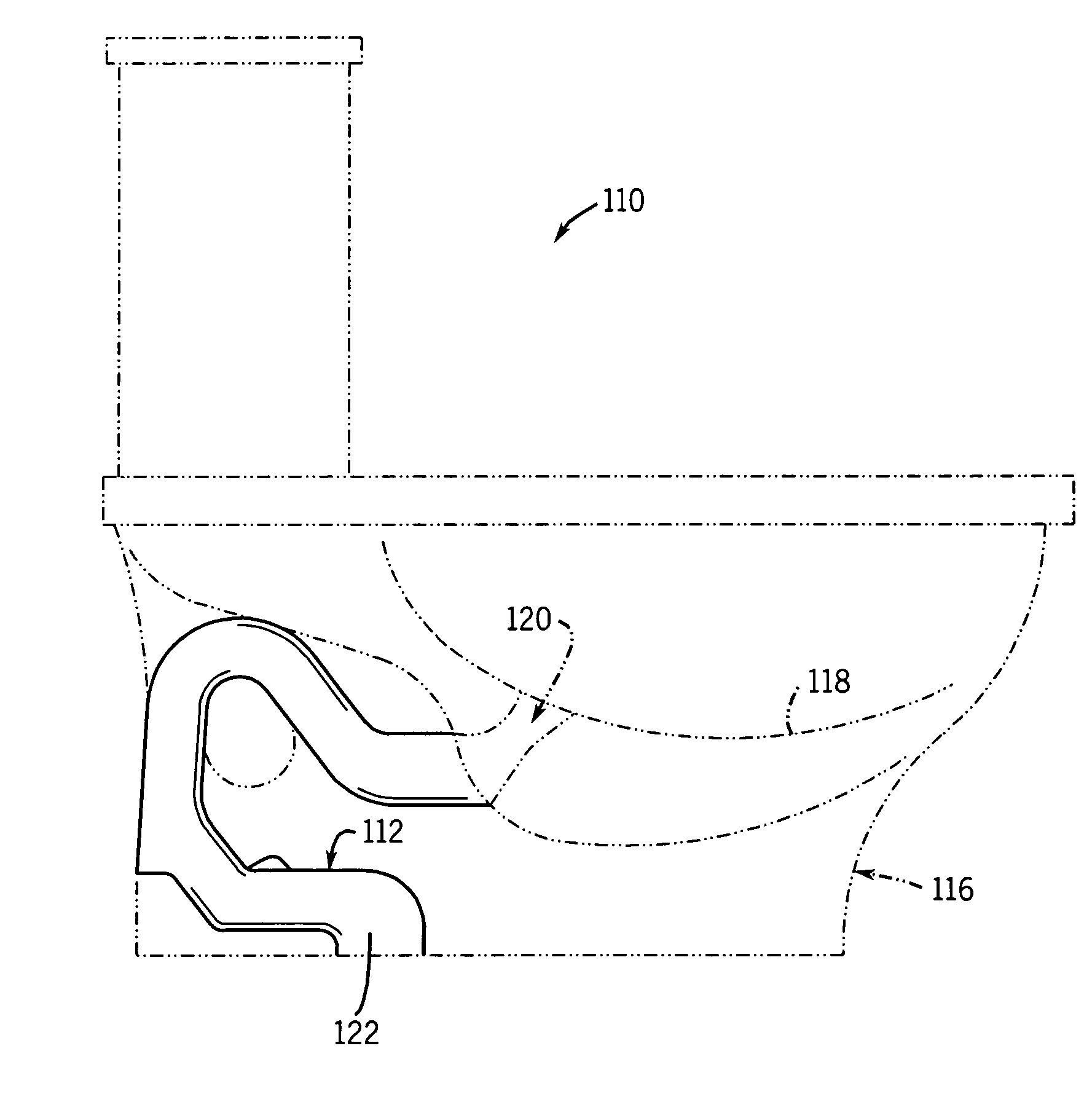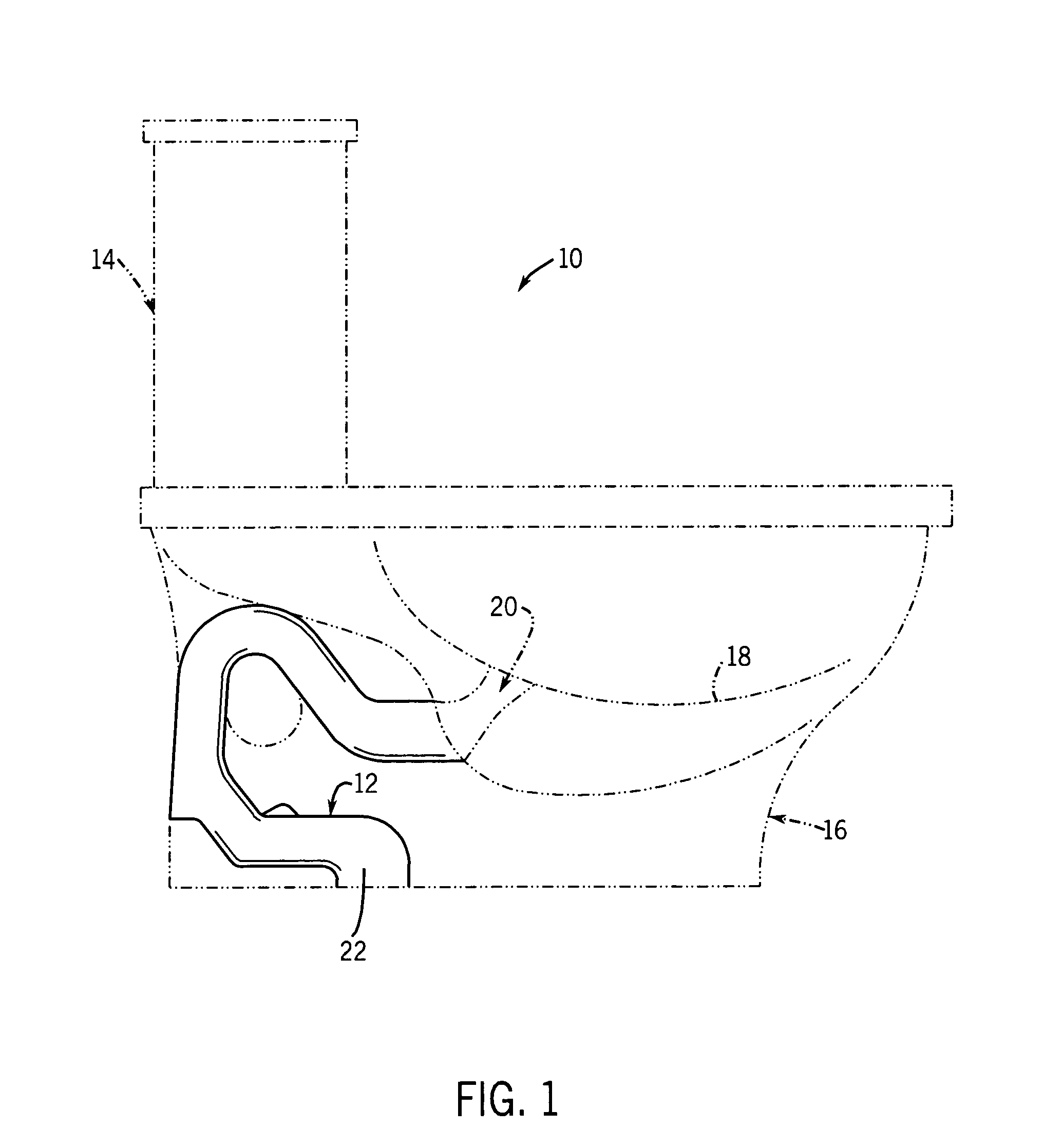Toilets with quick flush trapways
a trapway and toilet technology, applied in water installations, water closets, constructions, etc., can solve the problems of reducing the flushing cycle time, reducing the flushing efficiency of toilets, so as to reduce the waste of water, improve the flushing cycle time, and quick fill key portions
- Summary
- Abstract
- Description
- Claims
- Application Information
AI Technical Summary
Benefits of technology
Problems solved by technology
Method used
Image
Examples
Embodiment Construction
[0036]FIG. 1 illustrates a toilet 10 having a siphon passage or trapway 12 design according to the present invention. In particular, other than the trapway 12, the toilet 10 can be any suitable toilet, preferably of a low volume flush design.
[0037]For example, FIG. 1 shows in hidden lines a two-piece type toilet having a separate flush tank 14 mounted to a bowl base 16. A hole (not shown) in the bottom of the flush tank 14 aligns with a hole (not shown) in the top of the bowl base 16 to allow water to pass from the flush tank and into the a bowl 18, formed in the bowl base 16, during a flush cycle.
[0038]The trapway 12 extends from an opening 20 in the bowl 18 along a serpentine path, having for much of its length an essentially uniform and constant circular cross-section (as shown in FIG. 3). This cross-section is present at least in the second bend 30 at the dam 34.
[0039]The trapway has an outlet opening 22 at the bottom of the base of bowl 16, which mounts over the open end of a w...
PUM
 Login to View More
Login to View More Abstract
Description
Claims
Application Information
 Login to View More
Login to View More - R&D
- Intellectual Property
- Life Sciences
- Materials
- Tech Scout
- Unparalleled Data Quality
- Higher Quality Content
- 60% Fewer Hallucinations
Browse by: Latest US Patents, China's latest patents, Technical Efficacy Thesaurus, Application Domain, Technology Topic, Popular Technical Reports.
© 2025 PatSnap. All rights reserved.Legal|Privacy policy|Modern Slavery Act Transparency Statement|Sitemap|About US| Contact US: help@patsnap.com



